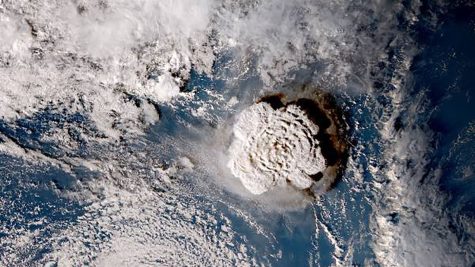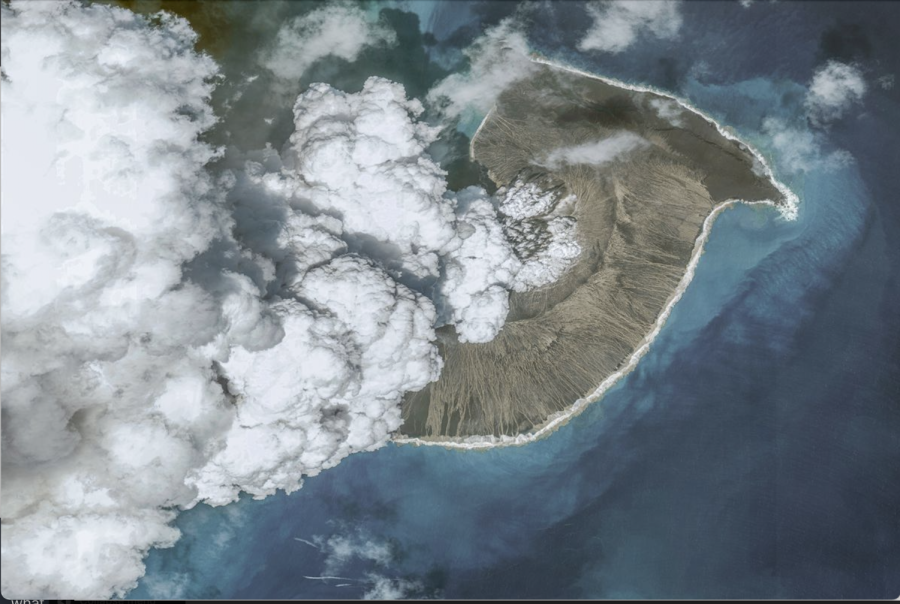Aftermath of Tongan Volcanic Eruption
March 15, 2022
The Hunga Tonga-Hunga Ha’apai volcano eruption emitted seismic activity that was considered colossal to the explosions already experienced. On 15 January 2022, an eruption occurred in the Tongan archipelago in the southern Pacific Ocean. This eruption was discovered to be the ‘climax’ of an eruption that began on 20 December 2021. The Hunga Tonga-Hunga Ha’apai is a submarine volcano 40 miles north of Tongatapu and is part of the highly active Tonga-Kermadec Islands volcanic arc. The volcano was first formed between December 2014 and January 2015 when all the ash, rock, and dust from the previous underwater volcano settled. The volcano’s eruption is seen as a ‘devastating force’ and is one that will go down in the history of all volcanic eruptions.

The Tongan eruption did cause the deaths of three people, mild injuries, drowing, and missing people, but scientists emphasize the long term impacts that the explosion are expected to have. When the main explosion occurred, a large plume of ash was sent soaring into the upper atmosphere and triggered tsunamis and earthquakes in not only Tonga, but also in Fiji, American Samoa, Vanuatu, New Zealand, Japan, the United States, Chile, and even Peru. The tsunamis themselves caused much damage as homes and villages were destroyed, an unhealthy amount of debris washed up the shores, and even an oil spill, but the ash presented bigger problems. The amount of ash that resulted from the eruption was so significant that it coated the main island, ‘transforming it into a gray moonscape’ (per euronews.green). Fundamental aspects of life such as drinking water and agriculture were affected by the ash and will now, on a long-term level, continue to have an impact. Tongans’ specifically rely on rain water as their main source of hydration along with the fruits and vegetables they grow as a main source of food, and with the heavy layer of ash that has settled in/on it, directors and officials say it would take some time to recover. Not only is the air and agriculture contaminated, but also the air, giving way to potential respiratory diseases. Aid from New Zealand and the United States was provided, but much of the recovery process has been affected by COVID-19.




teresa dickey • Mar 27, 2022 at 1:57 pm
Fabulous explanation. Good discussion of the environmental impact. Thank you.